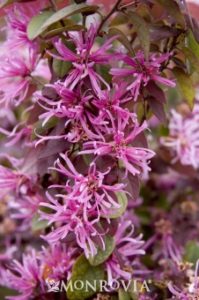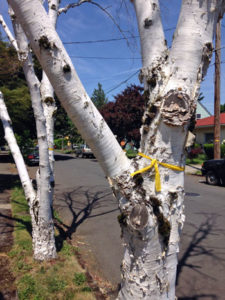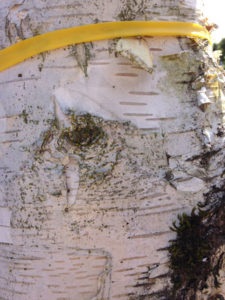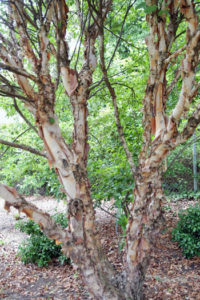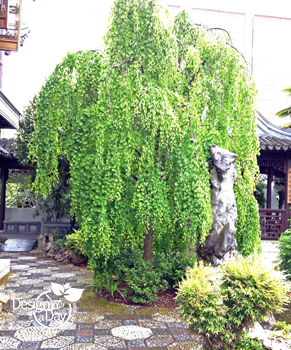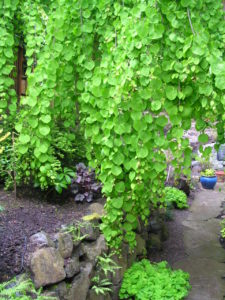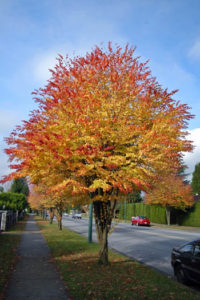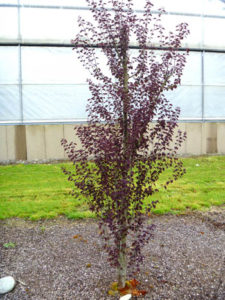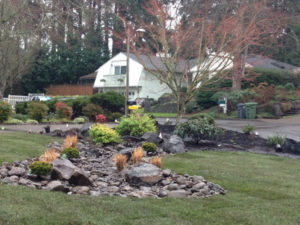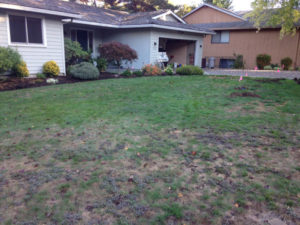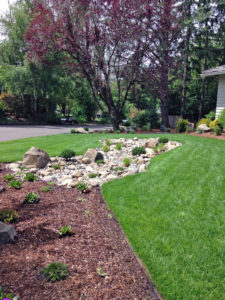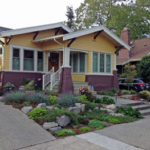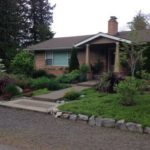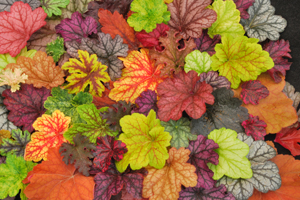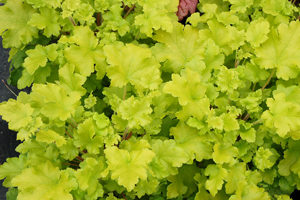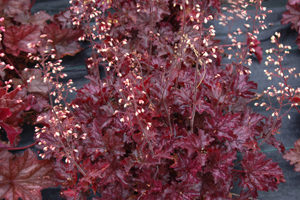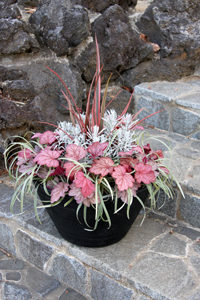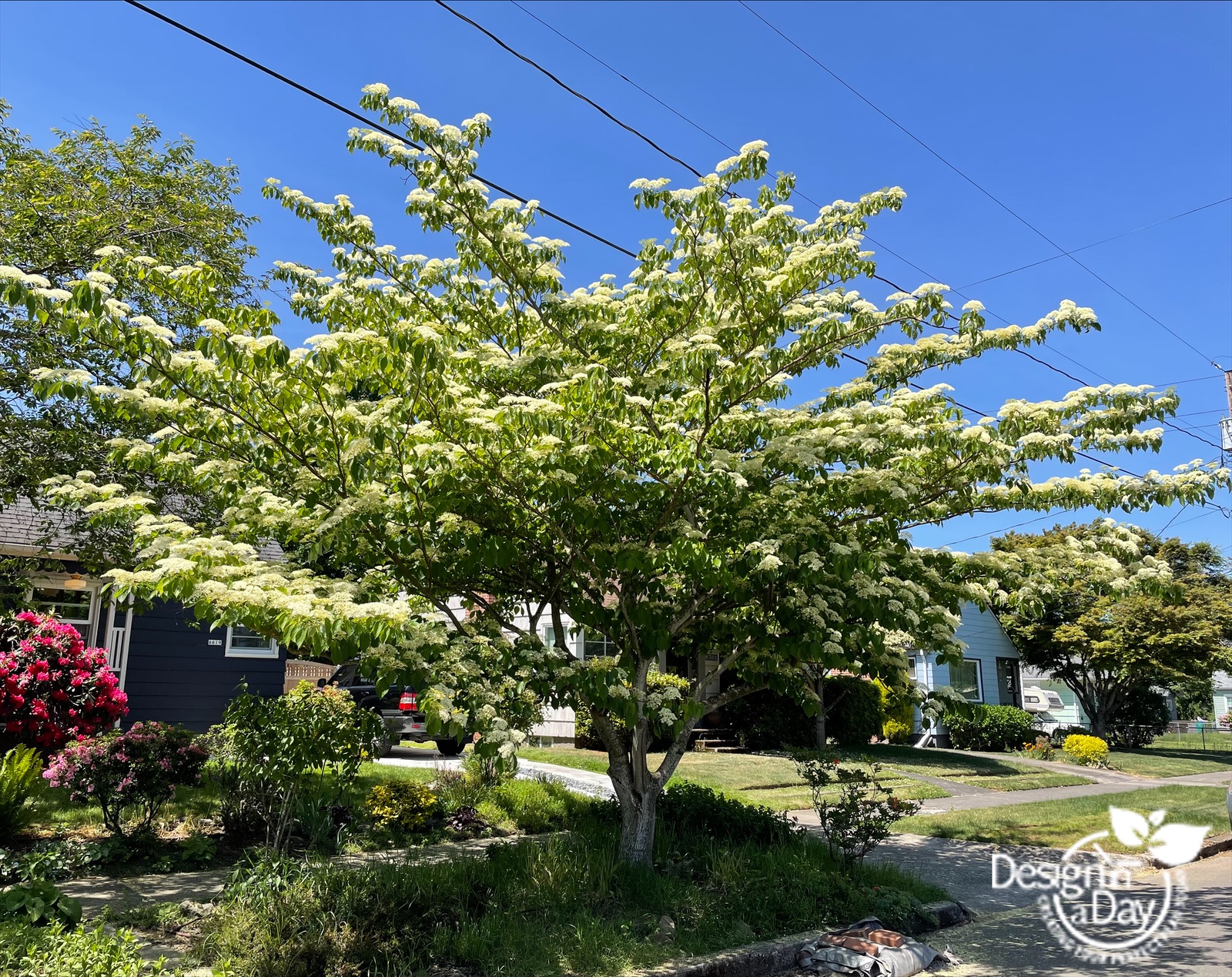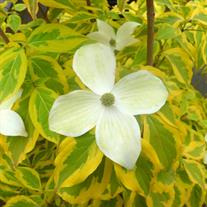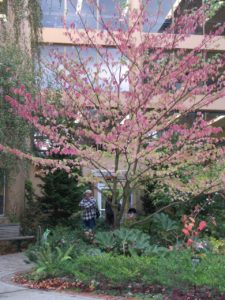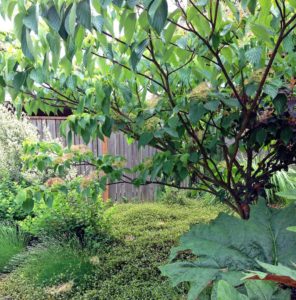
‘Sizzling Pink’ Chinese Loropetalum is the focal point plant for a Willamette Heights Landscape Design in a Day client’s entry.
Entry Presence with Winter Red Foliage for Portland Landscapes
Exciting Winter Color Shrub
As a Portland landscape designer I have many clients who want exciting winter color in their landscapes. When new clients fill in their landscape preference survey they often circle the option for burgundy foliage and add little hearts! Sadly most burgundy leafed plants are not cold hardy enough here in the Pacific Northwest to look picture perfect in winter.
My Favorite
My favorite choice for dark red or eggplant purple foliage is called Loropetalum chinense var. rubrum or Red Chinese Loropetalum. Plain Chinese Loropetalum has green foliage and white flowers. I love the Red Chinese Loropetalum. It has amazing thick hot pink fringe flowers in early spring. The spring foliage emerges burgundy red or dark to medium red pink depending on the variety. Other varieties are dark red to an eggplant purple through the year.
Unique plant but tricky to site properly
My NW Portland landscape design clients, Dave and Rhonda loved this plant. It provided a very attractive color echo of their eggplant front door and visually softened the adjacent concrete area. It looked good until January and then for several years the leaves burned and they didn’t grow back in until July!. The love was there but it took too long to recover for an entry focal point plant. Their plant, facing east, got sun from 6 am in the winter until 1 pm. They had good drainage and were careful and consistent with watering. Perversely, I have seen other plants simply glowing with health, facing east, in February in the same exact siting. Can you tell I had a little trouble giving up on that one? I avoid 6 am winter sun for best outcome.
So why bother with this plant?
It is the wonderful purple red foliage color, the soft arching shape of the branches and the hot colored fringe flowers in spring. Its well worth it if you love purple foliage. If the plant gets cold east wind in winter, the leaves will burn (desiccate) and it may look terrible until May or June. Year round good looks is all about proper siting and a bit of luck.
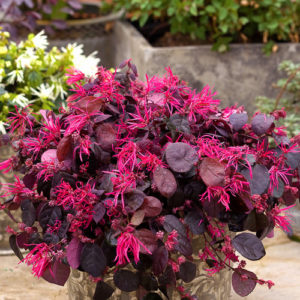
Proven Winners variety called Loropetalum ‘Jazz Hands’
Two good choices
These two old varieties are still easy to find and are what I’m most familiar with: ‘Sizzling Pink’, which is also called ‘Burgundy’ (cold tolerant to 15 degrees), and ‘Pippa’s Red’ (hardy to 10 degrees). ‘Pippa’s Red’ is not as dark a red leaf as ‘Sizzling Pink’. I’m interested in ‘Hines Purpleleaf’, ‘Zhuzhou Fuchsia’ and ‘Jazz Hands’ but wasn’t able to find them to purchase.
There are many new varieties but most were hybridized (designed) for the southern states and are not tested here in the Pacific NW.
I love to drive around Portland and see them thriving. They saw it, bought it, and just happened to plant it in the right spot!! Whoever they are, they don’t even know its supposed to be a little tricky. I would be willing to try it in colder areas like Gresham but only where it is 100% protected from east wind. Even then, I’d consider it an experiment. A whole landscape of plant experiments is called gambling and is not typically the result we want in a landscape design. Most of my clients want a sure bet plant when it comes to their entry landscape.

